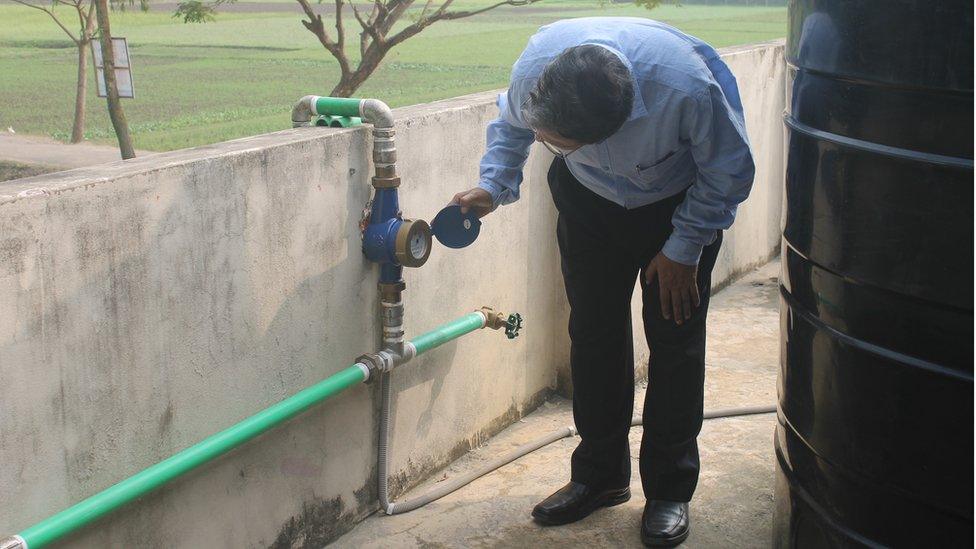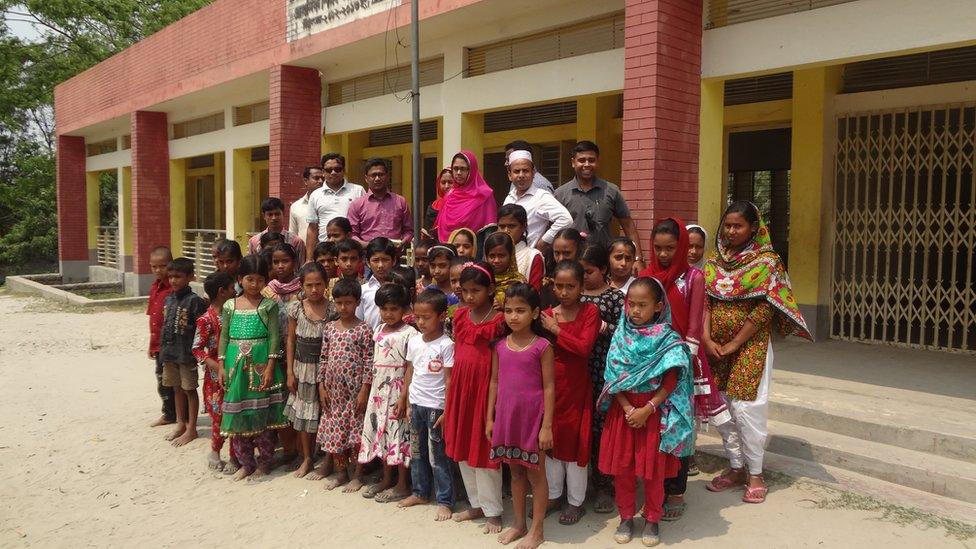The Bangladesh water purifier playing tricks on nature
- Published

The water treatment plant has just opened in Bangladesh
Technology developed by a professor at Heriot-Watt University in Edinburgh could help millions of people exposed to high levels of arsenic in their water supplies.
The world's first solar-powered, fully autonomous treatment plant has just opened in Bangladesh. It's already sharply reduced levels of the toxic chemical.
In western countries we tend to take water for granted. But in many parts of the world water carries a deadly payload.
At Heriot-Watt, Prof Bhaskar Sen Gupta points to figures suggesting more than 137 million people from 70 countries are exposed daily to arsenic in their drinking water.
If the same water is used for irrigation it means arsenic can build up in their crops as well.
We have the golden age of British crime fiction to thank for arsenic's image as a deadly poison.
It is not usually immediately fatal in drinking water. Instead, it is linked to a variety of debilitating diseases: cancers, disfiguring skin conditions, even type 2 diabetes.
Prof Sen Gupta is a water technologist whose current area of interest is in Bangladesh.
There the arsenic in the water supply occurs naturally.

The whole treatment system can be operated remotely
It is carried as silt in the rivers that flow down from the Himalayas, as it has for millions of years.
Until just a few decades ago, it sat harmless and inert in the banks of rivers and streams. But now it is dissolving, colourless and tasteless, into the shallow aquifers from which people draw their water.
It may be from a natural source but human activity caused the problem.
In a classic example of the law of unintended consequences, the introduction of new, improved types of rice has thrown nature out of balance.
"The new, high-yielding varieties of rice require a lot more water and fertiliser," Prof Sen Gupta says.
"Fertiliser-rich water from the rice fields reaches the sub-surface, but due to lack of oxygen the arsenic bearing minerals become by default a kind of participant in the reaction and break up, producing a very toxic type of arsenic."

The project currently serves schoolchildren in the Comilla district of Bangladesh
Prof Sen Gupta's solution involves, in effect, playing a trick on nature.
Water is pumped out of a well, gradually oxygenated in the air, and then sent back down the well again.
The oxygenated water meets bacteria that normally live in an oxygen-free environment. That's why the rise in oxygen level must be gradual. To do it suddenly would cause the bacteria to die.
The oxygen encourages them to change the arsenic from a liquid to an inert solid which is absorbed onto the surface of grains of sand in the aquifer.
All this takes place out of sight down the well. At no point does the arsenic come to the surface.
The technique - it's called subterranean arsenic removal or SAR - uses no chemicals and produces no waste.
Prof Sen Gupta and his colleagues have been working on SAR for almost a decade.

What's new is that it now runs on solar energy and is an autonomous system. Once the delicately balanced process is set up, the equipment can be run remotely.
The first plant is now open in the Comilla district of Bangladesh.
It was funded by the Engineering and Physical Sciences Research Council, with the support of the Bangladesh Green Energy Foundation.
The project serves 200 schoolchildren and - because the process eventually spreads through the aquifer - it will be able to serve 1,000 people.
The World Health Organisation's safe guideline for arsenic in water is 10 micrograms per litre. The level in the well was 239 micrograms per litre.
After just seven weeks the process brought that figure down to just two.
Global problem
And - almost inevitably in this connected world - Prof Sen Gupta says there's an app to run it all: "We can run the plant from anywhere in the world as long as you have the wifi connection.
"The NGO who are running it, the Bangladesh Green Energy Foundation, are actually running it from Dhaka more than 300km [186 miles] away."
Prof Sen Gupta wants to transfer his knowledge from Heriot-Watt to the world.
He says: "We as a global university would like to be responsible for global problems and global issues - and be part of the solution."
He is hoping to set up a charity to take the work further. It will have a simple selling point: with £5,000, you can improve a thousand lives.